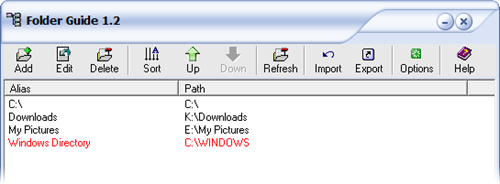I use a number of different ways to keep my work and others folders at my finger tips. I use the Quick Launch Toolbar generously, which for some strange reason is disabled by default. I always get annoyed at people who don’t use Quick Launch, and a lot of them don’t use it. It’s like deliberately cutting off your arm and then fumbling around trying to grab things.
I also use Flash Folder, a software I wrote about earlier, that allowed me to save my files at the right places. There is FileBox eXtender too, which is quite similar but I prefer Flash Folder. Recently I came across another tool, something I’ve always wanted.

Called Folder Guide, this free utility allows you to add shortcuts to custom folder location to Windows Explorer’s context menu. The program is simple to use. After installation, run the executable from the start menu or right-click on Explorer and click settings under the menu item “Folder Guide”. Now add as many folders you want to. They will all appear in the context menu.

Here is another interesting thing. This “Folder Guide” menu item appears when you right click on Windows Open/Save dialog box as well. It also works from the Start Menu button (right-click on it) and the Desktop. I think I’ll remove Flash Folder and use this instead.
Folder Guide works on Windows 9x/2000/XP/2003. Not tested on Vista and 7, but that doesn’t mean it doesn’t works. Try it yourself.

Comments
Post a Comment